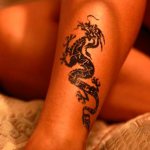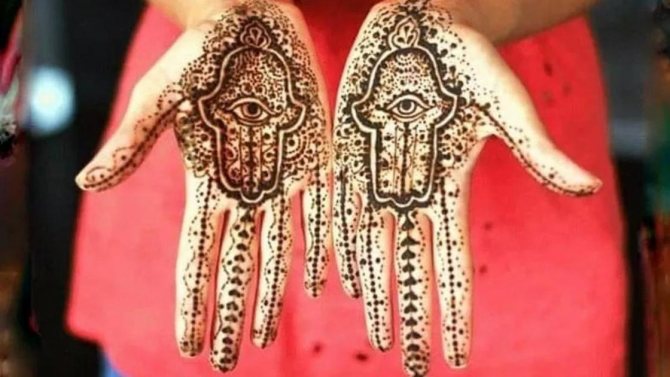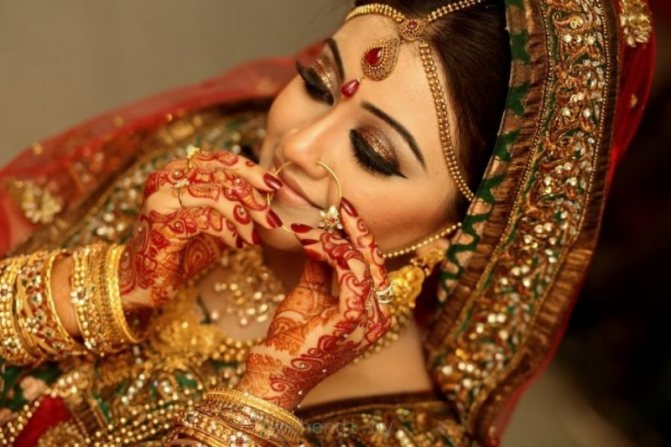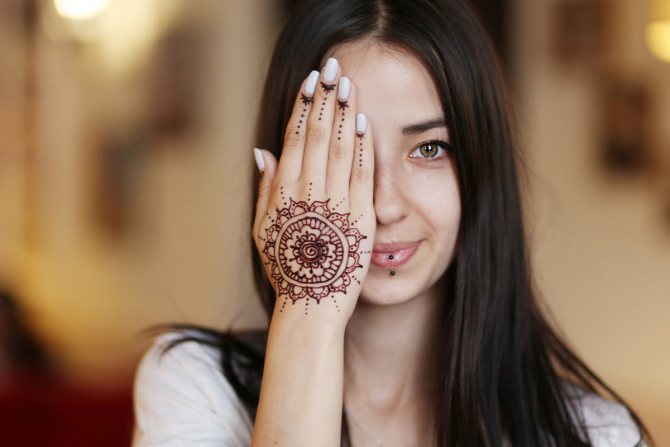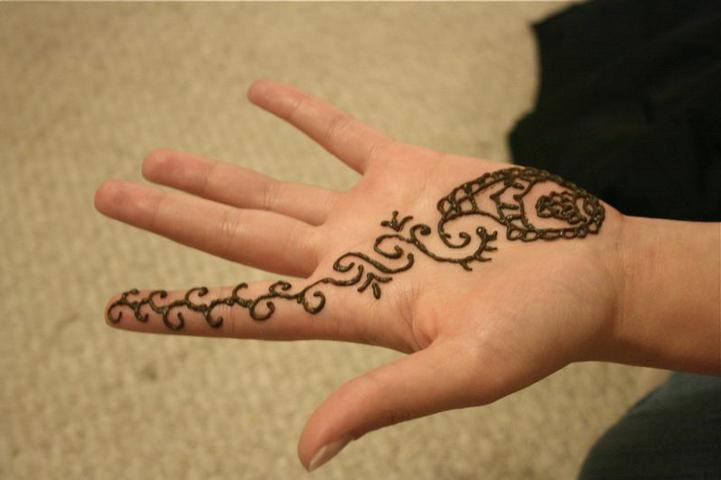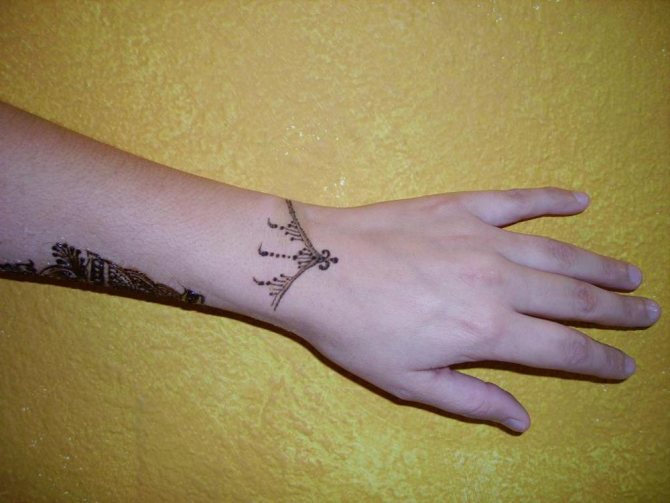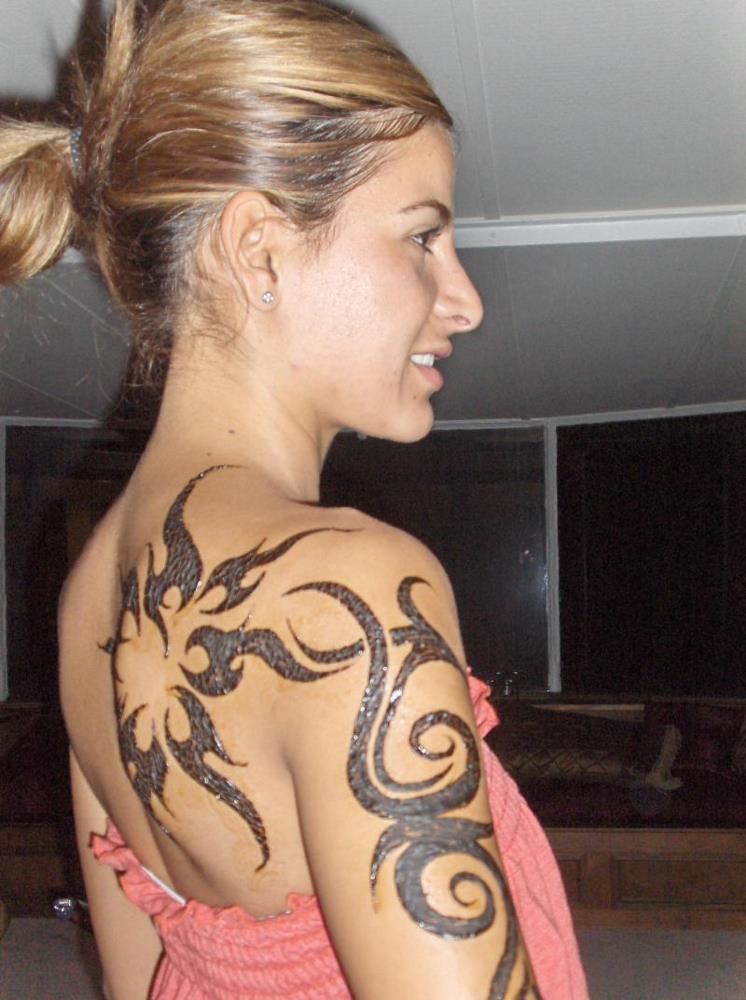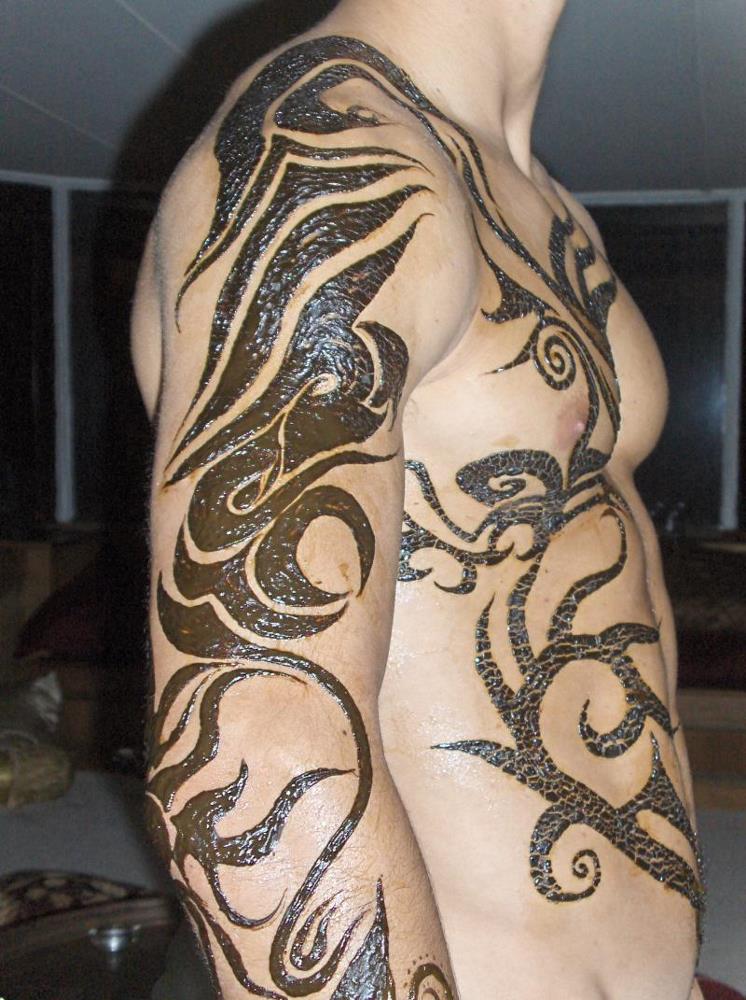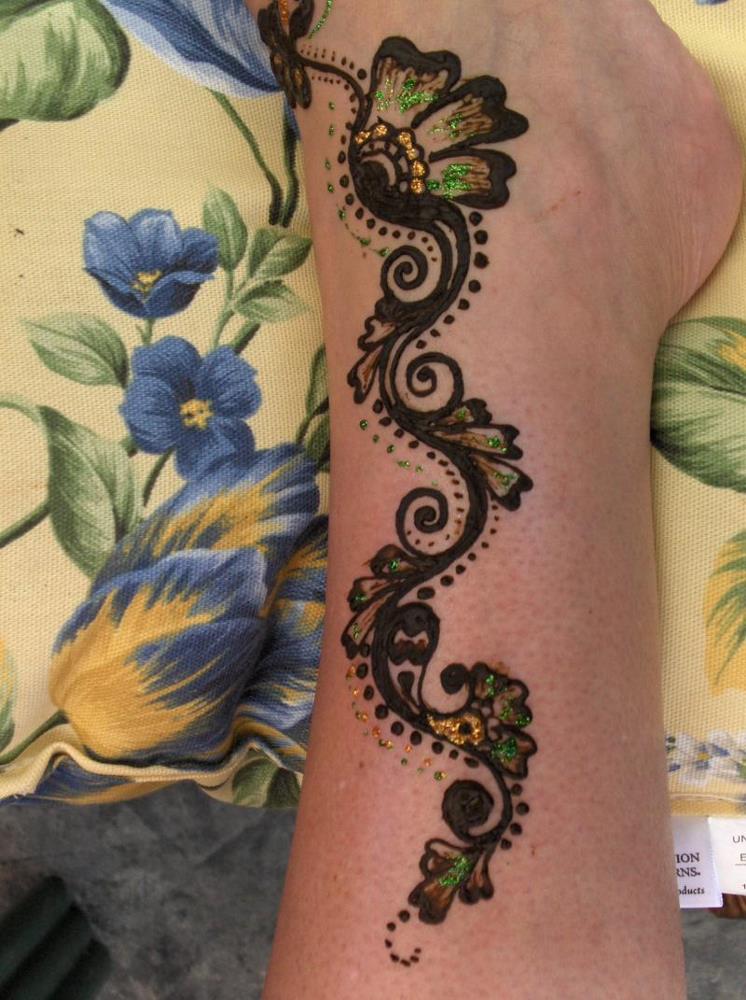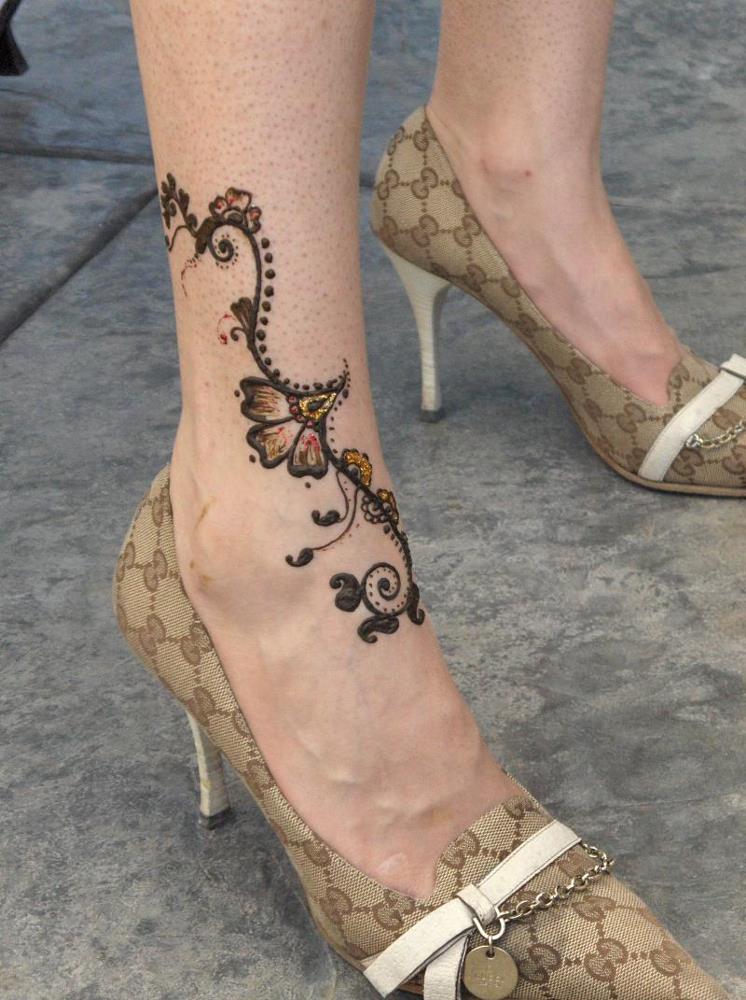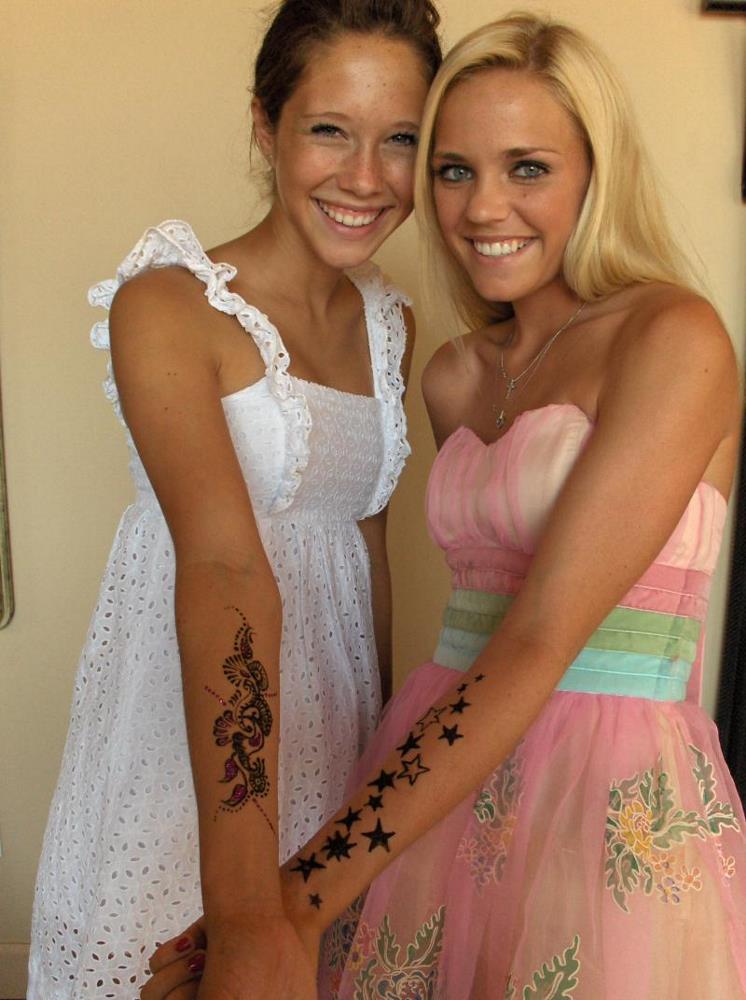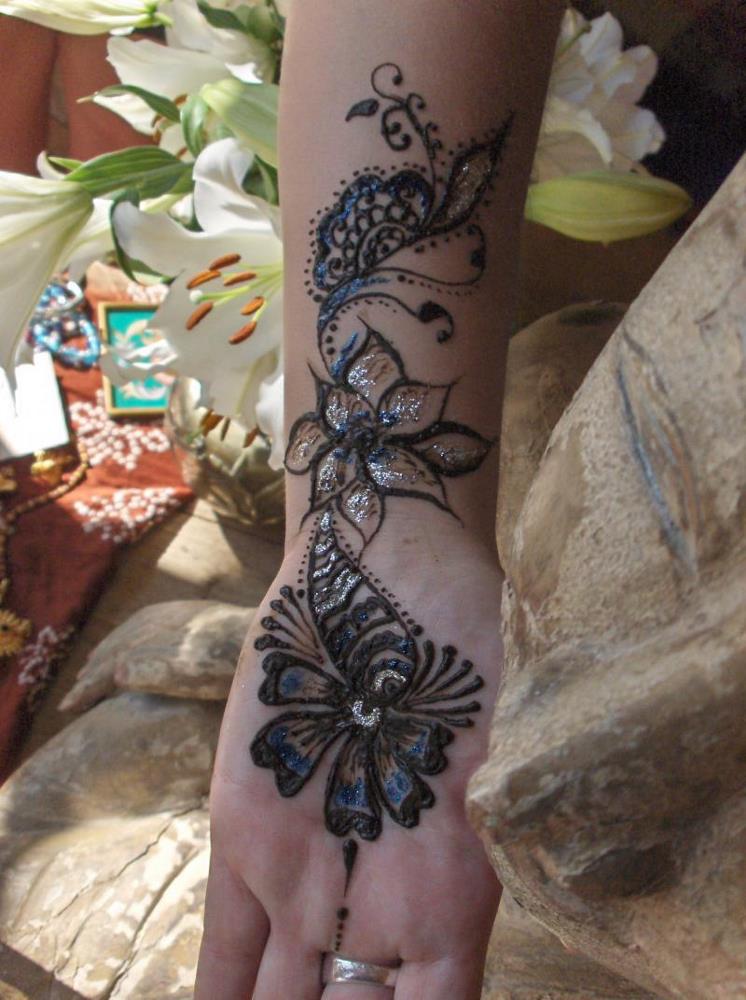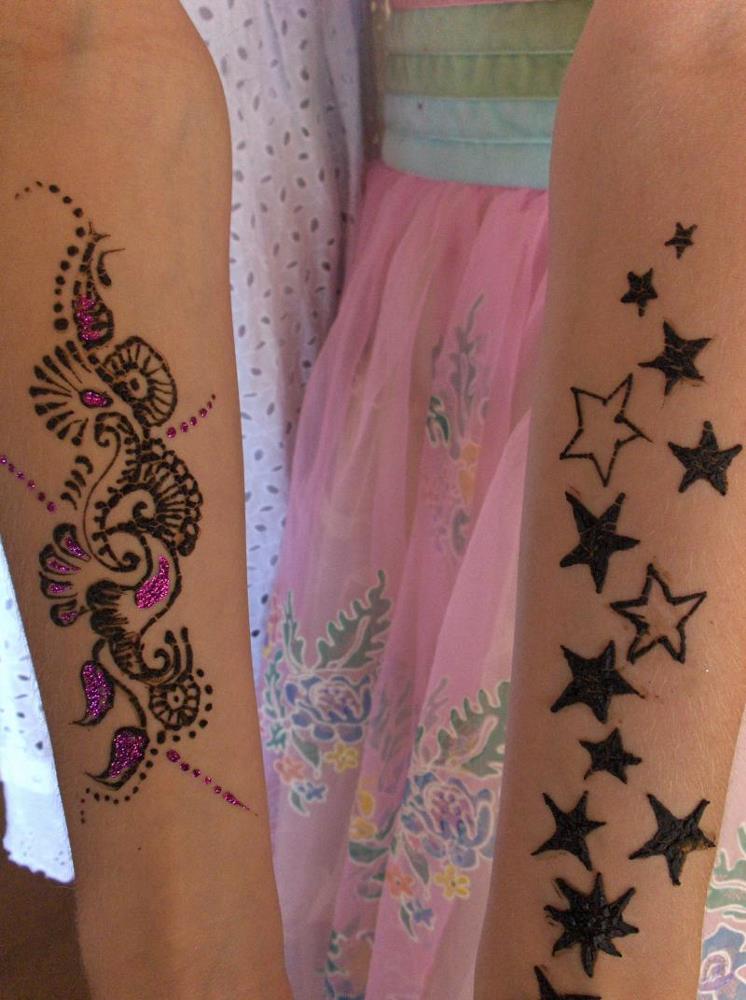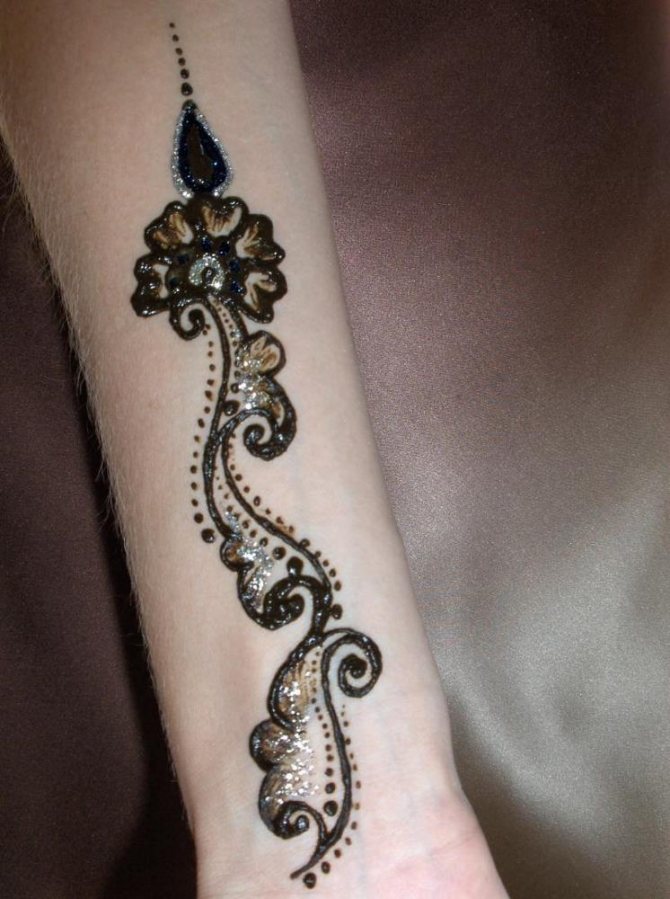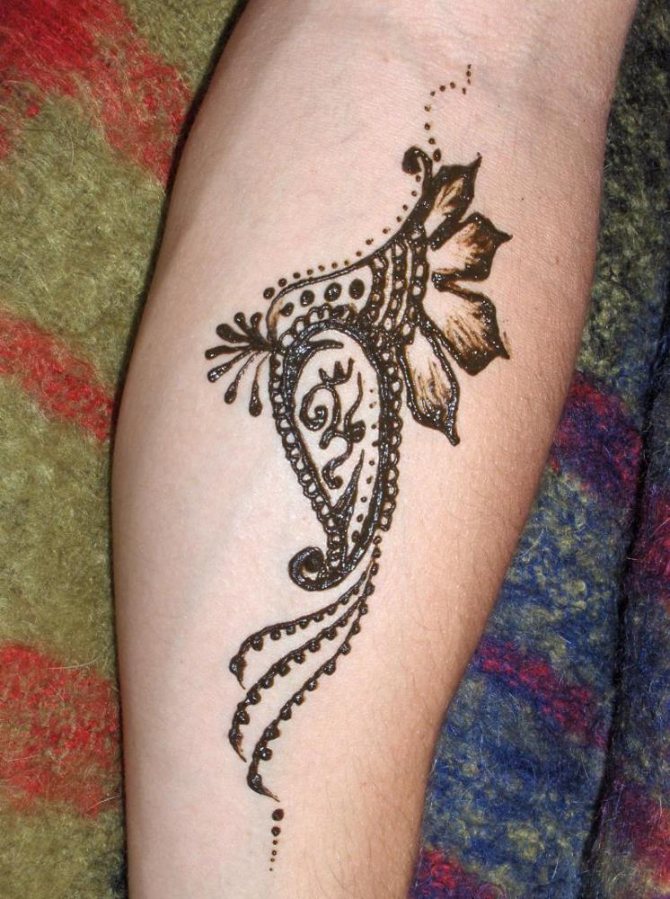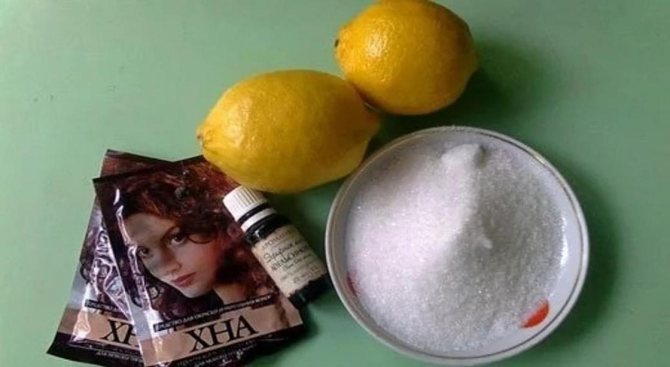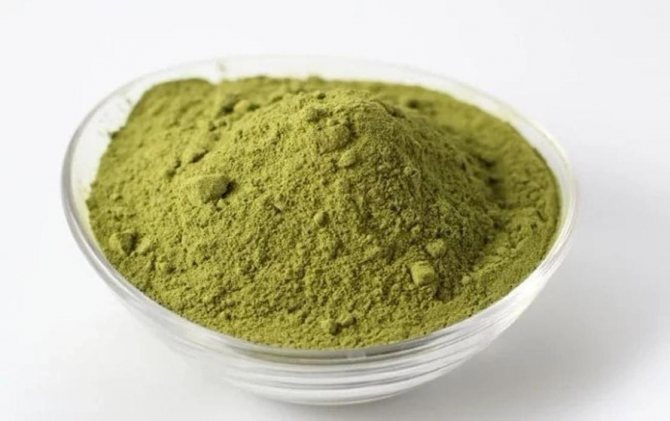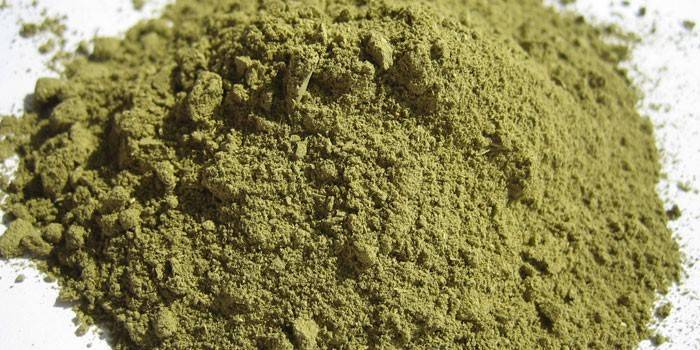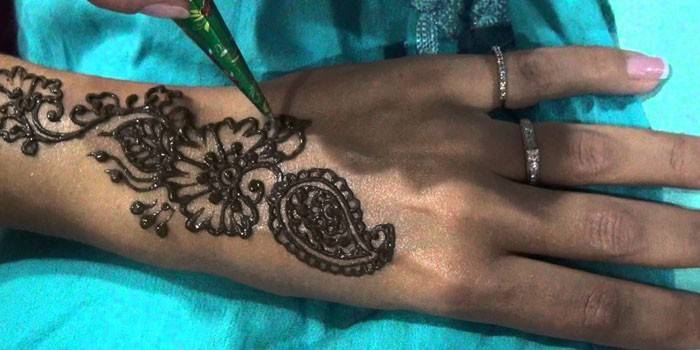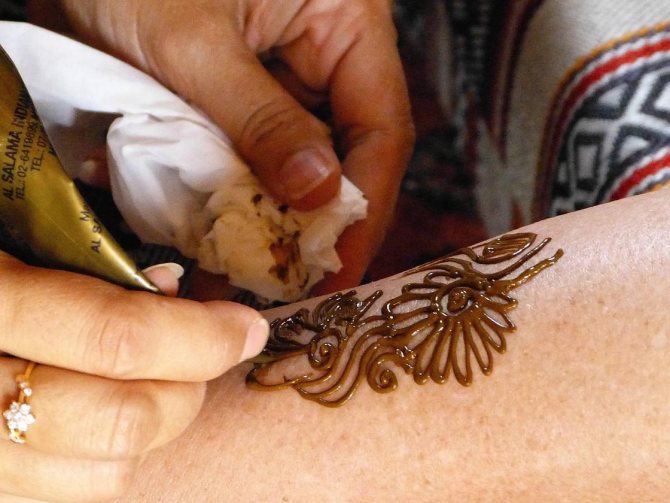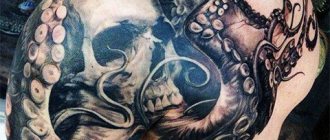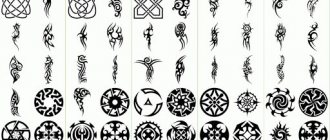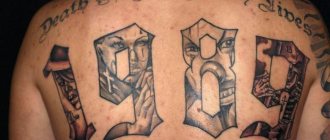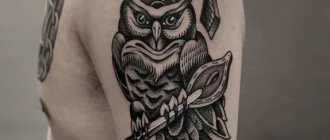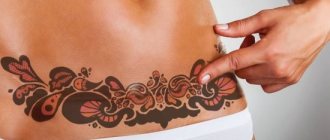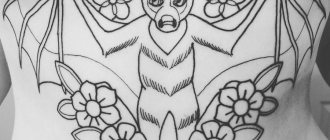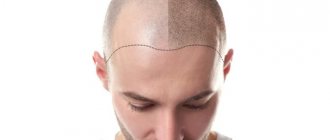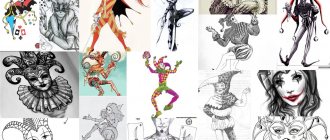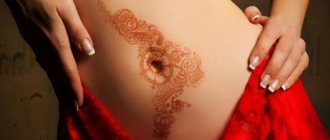- Main
- Mehendi
The henna tattoos on the photo and in reality on the human body look beautiful and mysterious. But not all drawings are simple and clear, there are such artistic creations that it is difficult to find the main purpose and grasp the idea. Some patterns come to us from antiquity and their interpretation is complex, ambiguous and may depend on many details. A mehendi master knows the secrets of the designs and can help you comprehend the secrets of the East.
Photos and sketches of henna tattoos
Applying henna tattoos
A henna drawing will remain quite bright for 5-14 days. The henna-based tattooing procedure is done in several stages.
Preparation for the procedure
- The more even the skin, the better the quality of the drawing.
- The flatter the skin, the better the pattern.
- To achieve a smooth skin, conduct a peeling procedure.
- Remove hairs from the skin.
- Draw a dotted line of the future pattern - the excess is removed with vegetable oil.
- Do not do the drawing many times in one place - you will get allergies.
Carrying out the procedure
- A warm room - the best reaction of the skin.
- Applying a thin layer of eucalyptus oil on the skin - opens the pores.
- Testing for allergies - a little solution with henna and a drop each taken eucalyptus and sunflower oil is applied to the elbow. Sustain for 10-12 hours. If after the specified time interval the skin does not turn red, then you are not allergic.
- Applying the template to the skin, pressing and applying the dye paste.
- Drying of the paste and removal of the template.
Post-procedure measures
- Drying the mendi for 60 minutes in a warm room (you can use an infrared lamp). The better you dry - the more beautiful and longer it will hold.
- How to get brightness and contrast? Sugar and lemon juice are mixed 1 to 2 and applied to the tattoo without damaging it.
- Removing the residual paste with a cloth, scraper or knife.
- Apply vegetable oil to soften the skin. Sesame or almond oil - shine and brightness of the pattern, eucalyptus oil - darker lines of the pattern.
- To fix the pattern - hairspray. You can use colorless nail polish, but it is unpleasant.
Removal of the tattoo-mendi
When you notice that the image is no longer bright and beautiful, take soapy water and a soft brush - and boldly erase.
Learning how to apply paste
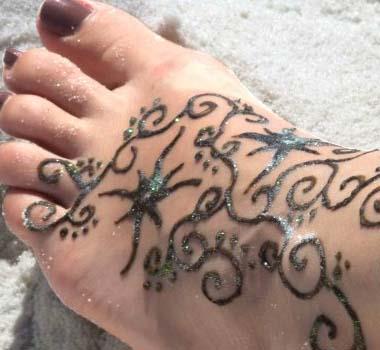
- Crush the tube of paste.
- Cut off the tip - the hole should be as small as possible.
- Rub a few drops of eucalyptus oil into your skin.
- Test the syringe bag on paper to see how much pressure to apply.
- Draw an outline with a pencil, then apply the paste on top.
- If individual hairs or small pieces of the plant in the composition clog the bubble hole, gently clean it with a needle.
- If you put the wrong place - immediately wipe off the henna with a damp swab or cotton swab. Paste applied with a thin, stiff brush, polished stick or an object that can replace it (this could be, for example, a toothpick).
Benefits of henna tattoos
- The opportunity to realize the subconscious desire to decorate your body.
- The possibility of periodically changing your image, without changing it drastically.
The quality of henna depends on
- Duration of storage (the fresher the better)
- Proper packaging (you want it in a vacuum)
- Transportation method
The henna tattoo at home - how to do
To begin with, it is advisable to look through the stencils offered in salon catalogs. Experts know a unique recipe for how to use henna at home and here is what they advise.
- Patterns are chosen, and the paint is prepared. The composition is poured into a bowl, and lemon juice is added.
- For rich male or female henna tattoos, it is recommended to add strong tea.
- The place for application is covered with eucalyptus oil - the key to a successful recipe. In this way, the paint holds for a long time.
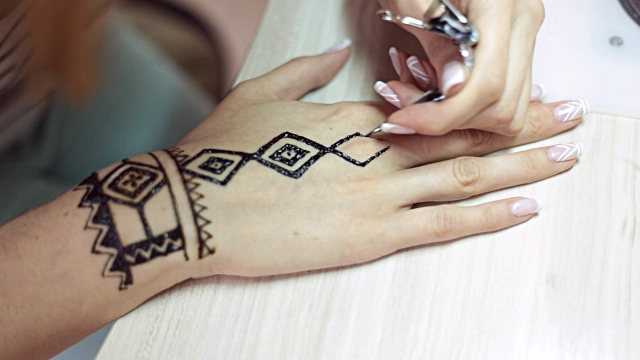

An artist who knows how to hold brushes, it is easier to cope with the task. You should start painting from the far corners to avoid smearing the picture. Patience will help to achieve the best result: drying will last about 60 minutes.
What is mendi - how to choose a quality henna
It is a body decoration made with henna or other special dyeing composition. The henna was grinded into powder and used to make paint. It was used to make all kinds of patterns on the skin. The Indian brides still apply various patterns of henna to their skin on their wedding day, and they also paint their palms with it - this is the ancient custom.
Mendi cannot be called a tattoo in the conventional sense of the word. It is rather a biotattoo, which is performed by drawing on the surface of the skin pattern with henna or a special chemical composition.
Depending on the complexity of the chosen design, they can decorate the body for only 1-2 hours, and the duration of the "life" of this decoration - about 25-30 days (during this time the epidermis is almost completely renewed, which leads to the disappearance of the tattoo), but after 7-15 days picture loses its former brightness.
The mendi procedure does not cause pain, it is hygienic and excludes the possibility of getting any infection in the body. Moreover, as a natural dye, henna has beneficial effects on the skin and even cures certain skin conditions. To obtain a henna dye that can be used in tattooing, the leaves from the apex of the Lawsonia Inermis shrub, which is most commonly found in Sudan, Egypt and India, are usually harvested.
The collected plants are dried. They are then milled into a powder, which can be used to create body designs of varying degrees of saturation. For hair coloring, the leaves of the same shrub are used, only from its middle part. They do not have such strong dyeing properties.
The shelf life of such a powder is on average 3-6 months, but after opening the package it is significantly reduced. The remaining unused powder should be stored in a cool dry place, tightly closed, but it is desirable to use it for its intended purpose as soon as possible.
If the ornament includes a sufficiently large number of wide lines, it is better to use a syringe-cup instead of a tube with a dyeing composition. Such a simple device can be made yourself: for this purpose, a strong plastic bag about 20 x 16 cm is rolled up into a pile, and the seams are sealed with adhesive tape or adhesive plaster.
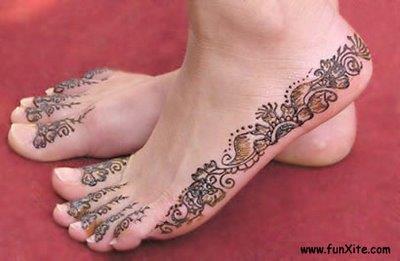

Before you start the device is filled to 2/3 with henna dye and closed tightly, for which the bag is tucked twice at the top edge and fix the place with masking tape. At the bottom of the bag a small hole is made through which the mixture will flow out when the bag is pressed.
Benefits of henna painting
Mehendi has a number of advantages compared to classic tattoos:
- The procedure is completely safe (does not cause discomfort or pain, no risk of infection).
- Henna drawing is suitable for people with a low pain threshold, in whom the very thought of the impending tattoo causes panic.
- Mehendi is allowed for adults, teenagers and even children.
- The procedure allows to understand, as far as this or that picture is suitable for the client. And if the chosen sketch will not be to your liking, it can be easily washed away in a few days.
And lastly, the henna drawings do not cause allergies, so they are completely harmless. The exception is the so-called "black henna". It contains chemical additives that can provoke redness of the skin, swelling, rash, contact dermatitis. Hypersensitive people are better to choose natural henna.
Limitations - to make it last longer
- Do not exercise intensely, because you sweat
- No hot baths
- Do not soap the tattoo
- Don't bathe often, but if you want to, use sunscreen with waterproof cream.
Brightness of henna
- Real henna only has a reddish-brown hue
- Black henna is a chemical henna.
- To make the henna darker, the powder is diluted with tea, coffee or infusion of walnut shells.
- On white skin - a reddish hue, on the dark - a darker shade.
- On thin skin, the pattern is paler (on the neck, abdomen, nape of the neck).
Homemade henna paste
- Boil half a liter of water.
- Pour and well stir two teaspoons of natural ground coffee or two teaspoons of tea (black only).
- The resulting mixture boil on low heat for an hour, stirring occasionally.
- Two or three times sift through a fine sieve (or through an ordinary nylon stocking) 35-45 grams of natural henna (do not use for body coloring henna intended for hair coloring, because it is made from another part of the plant).
- Gradually add the hot mixture to the powder, without stopping to stir the composition. The mixture should acquire the consistency of a sugar glaze. Never make the paste too liquid, as it will leak and the pattern may not come out at all.
- If you add a little lemon juice to the paste, the color of your drawing will be brighter.
- If there will be lumps in the paste - carefully rub it through a sieve.
- Now cool the resulting composition (do it for three or four hours, no less).
- Your paste is ready to use.
The price for a henna tattoo
Not everyone under the force to hold an even line, especially if the role of the canvas for painting stands own skin. Now in the salons of almost any city are available services for the application of mehendi. They all differ in professionalism of the masters working there and the cost of the procedure. How much is a henna tattoo, you can find out by calling a specific salon. Prices in Moscow range from 300 to 700 p. for a small tattoo to the wrist. If the same picture is large or complex, then put will have to pay from 2500 p.
Preparation of Indian composition
Tools
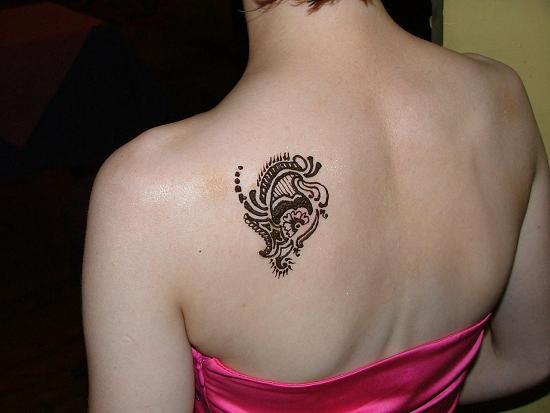

- two ceramic containers for diluting henna powder
- Spoon, scissors, cotton swabs,
- A medical syringe without a needle or a plastic bag with a small hole for drawing on the skin.
So, prepare a strong tea brew (the strength of the tea largely determines the tone of the drawing) and pour it into two containers of equal volume. In one part of the brew juice is added, squeezed from half a lemon, 2 tablespoons of sugar, everything is thoroughly mixed and prepared with this mixture dilute the henna powder. As a result of the described manipulations there should be a homogeneous mass of the consistency of thick sour cream, which should be kept for 15-20 minutes.
After the due time, the diluted henna is placed in a device for drawing (as mentioned earlier, this can be a medical syringe without a needle, a plastic bag with a hole or a special tube) and proceed to the procedure. It should be said that the diluted henna powder can be stored in a cool place (for example, in the refrigerator) for 24-48 hours.
Mendi sketch pencil
These pencils are very easy to handle and come in a variety of colors (black, blue, brown, orange, green), and offer a fairly large selection of shades of each color. They are used not only for mendi, but also for tattooing.
It is used not only for tattooing, but also for tattooing. The pattern on skin with these pencils is very similar to Mendi in quality, but it is held on skin only for a couple of days. So, if you want to keep a successful pattern for longer, it will have to be renewed daily. But it looks absolutely gorgeous: these pencils give the effect of transparency and at the same time have very pleasant shades, perfectly in harmony with the skin. If it's not a great pattern, you can forget about it the next day and make yourself a new one.
Recommendations
- Close after work, otherwise it dries.
- Try not to damage the tip, otherwise it will be inconvenient to draw
Types of pencils
- the device is similar to a felt-tip pencil: the dye coming from the reservoir soaks up the soft tip of the pencil.
- The tip is much harder, and it needs to be constantly moistened. It will take considerably more time to work with such a pencil, but maybe you will like working slowly and carefully more.
Before you start, draw your favorite pattern on paper. If you draw a bad line on your skin, try to quickly erase it before the paint soaks into the skin. If this fails, try slightly altering the pattern to hide the unsuccessful area.
Mendi Styles
- A style borrowed from India, Henna Mehndi Tatoo. This style is characterized by a predominance of delicate lace-like openwork patterns, made up of individual thin, sinuous lines. In general, the image has a vague, as if blurred silhouette. As a rule, Henna Mehndi Tatoo style body art is based on the translational technique.
- European style is characterized by the prevalence of plant motifs, stylized images of zodiac signs and hieroglyphs in henna paintings. As a rule, the drawings are small and their favorite places are ankles, wrists, forearms, shoulders and neck.
- Among girls, henna tattoos in the form of bracelets, necklaces and intricate chains are popular. Such images are usually placed on the arms and neck, less often mendi in the form of bracelets can be seen on the ankles.
Drawings for girls
Representatives of the fair sex prefer openwork and lace drawings, which are applied in the form of rings or bracelets and give women's hands a special charm.
Popular images are:
- outlandish birds;
- butterflies;
- beautiful flowers;
- ...small leaves..;
- climbing vines.
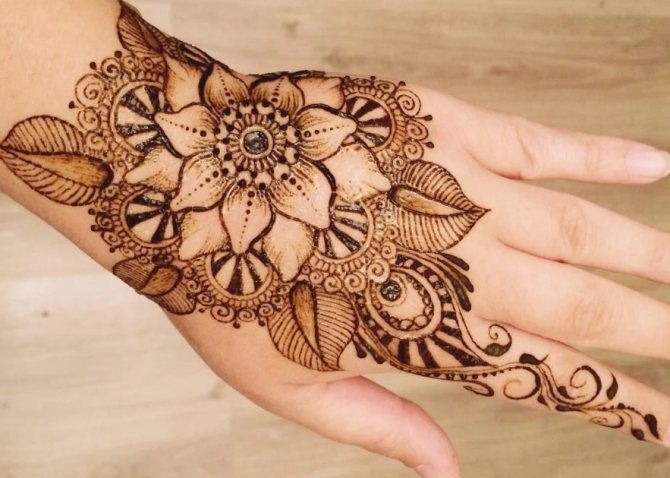

Mehendi is just an opportunity to express themselves, paying tribute to fashion.
Chains of small fragments - geometric, vegetal and fantasy - look elegant.
Mendi with rhinestones or Crystal tattoos
Crystal tattoos, or Svarowski tattoos, are a type of temporary tattoo. This method of body decoration involves applying to the skin and placing along predetermined lines that make up an integral pattern, colorful crystals (so-called Brilliance materials, or rhinestones, which are made from inexpensive crystal or gemstones).
Required
- Henna paste
- Tweezers
- Rhinestones
- Sponge and makeup glue
- Sketch
The process
- Skins Degreasing
- Sketching
- Gluing Rhinestones
- Tweezers press them onto the skin
- Fixing sponge
The first method
Ready pattern of rhinestones is applied in accordance with the instructions on the surface of the skin. Is conducted degreasing the skin, then a transparent film with rhinestones gently removed from the protective cloth, with all the stones should remain on the film.
If such an operation was not performed the first time, and several crystals remain on the cloth, it is necessary to reconnect it to the film, and then once again try to separate them from each other.
To apply the rhinestones on the skin, a transparent film with stones is pressed firmly against the selected area of the skin, left for some time to allow the adhesive layer on the rhinestones to warm up from the body, pressed again with the palm of your hand and, taking care not to displace the crystals, remove the film. At the end of the procedure is recommended once again press the rhinestones with the palm of your hand to the body to fix them firmly.
It should be noted that crystal tattoos should be glued to the skin immediately after the protective tissue is removed. Otherwise, the adhesive layer can get dirty, and this will lead to the fact that the rhinestones will not stick to the skin well.
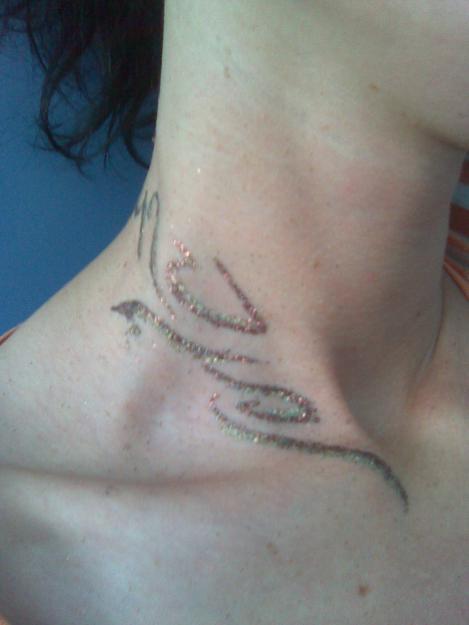

The second method
The method of applying crystal tattoos with a master tape requires more experience and some skill. Unlike the first, in this case, the master is given the opportunity to independently create a new design or slightly improve or correct the ready-made, purchased in the store.
Before applying the rhinestones to the body, the selected area is treated with a cleanser, such as soap solution, lotion, etc. Then on the outer side of the master tape with a special marker they draw the outline of the pattern, along which the stones of desired colors are placed with tweezers. After this, the master-film is placed on the prepared area of the body, pressed down firmly and the film is removed. An image of crystals should remain on the body.
Common Patterns with Interpretation
The art of applying henna natal patterns is many centuries old. Now most of the images do not carry any hidden symbolism, but are used for decorative purposes. But some ornaments contain a secret meaning, and it is useful to know it for those who are going to make mehendi.
The most common symbols and their meanings are listed in the table:
| Symbol | Meaning |
| Patterns and geometric shapes | |
| Circle | Stable life |
| Square | Healing from illnesses |
| Triangle | Protection from disasters, illness and anxiety |
| Octagon | Full protection from any troubles threatening from different directions and sides of the world |
| Palm of Fatima (Hamsa) | Protection from evil spells and ill-wishers, a symbol of faith, patience, prosperity and nobility |
| Crown | Power, leadership and superiority |
| Ripple on the water | Purification and new life |
| Dreamcatcher | Guard against evil spirits, negative energy, evil eye, bad thoughts, and dreams |
| Spiral | Cognition of self and the world around, infinity, the second birth |
| Stars | Protection from evil forces and spoilage |
| Pentagram | Well-Being, Peace in the Family |
| Mandala | Wisdom, a desire to achieve the desired |
| Cucumber | Financial happiness, luck |
| Bird's feather | Upward - freedom and willpower; soaring above the palms - separation and sadness; broken - unfulfilled hopes |
| Flora | |
| Stylized flowers | Joy and happiness, femininity, refined taste, rich inner world |
| Flower bracelet | Happiness in family life |
| Rose | Passion, love, inner and outer beauty |
| Leaves, vines | Longevity and vitality |
| Ivy | Wealth |
| Lotus flower | Femininity, purity, beauty, grace |
| Unopened flower bud or bud | The beginning of a new life |
| Fauna | |
| Butterfly | Life changing, healthy and lucky |
| Dragonfly | Renewal, rebirth |
| Birds | Lust for life, love of freedom |
| Scorpio | Romance, love |
| Swan | Success |
| Peacock | Beauty, longevity, variety and joy of life |
| Wolf | Self-confidence, fearlessness, the capacity for self-sacrifice |
| Snake | Wisdom, knowledge, enlightenment, serenity |
| Elephant | Greatness, prosperity. |
| Turtle | Fertility, protection |
| Owl | Wisdom, eternal life, intelligence and power |
| Leo | Manliness, nobility, self-confidence. |
| Dragon | Manly strength and energy, boldness and power. |
Many clients prefer to have their bodies painted with hieroglyphs or inscriptions consisting of Latin letters. Before you type a word, phrase, Chinese or Japanese signs, it is worth finding out their meaning. Otherwise you may get into an awkward situation or cause trouble.
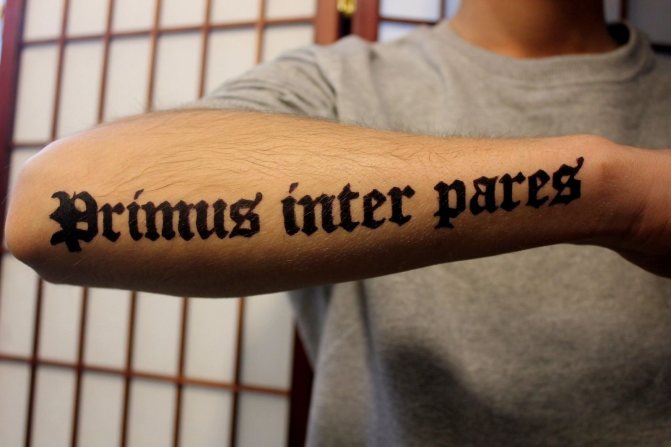

It became very popular to put different inscriptions on the hand.
The third way
At the beginning of the procedure, using a special Brilliance marker with a thin tip, the master makes a marking, for which he places dots on the prepared skin of the client, defining the location of the lenses.
Then, using tweezers with flat tips, stones of the selected color are placed in the designated areas and fixed with a special applicator Brilliance. The remaining details of the sketch are removed with an alcohol-soaked cloth or cotton swab.
Recommendations
- Do not place the stones in the immediate vicinity of the mucous membranes of the nose and mouth, as they can peel off, get into the respiratory organs and cause a respiratory arrest;
- It is strictly prohibited to apply rhinestones on the cornea and mucous membranes of the organs of vision;
- Do not use the same stone twice to apply to the skin, as the adhesive composition on the rhinestones is not designed for reuse;
- As a rule, crystal tattoos remain on the skin unchanged for 10-14 days. Their "life" is considerably shortened if the stones have been placed without observing the appropriate requirements (for example, the skin was not treated before the procedure or the rhinestones were placed incorrectly), the tattoo is placed on a very mobile area of the body (joints, eyelids, etc.) or is under constant external influence (for example, rubbing against a watchband or clothing sleeve).
- Rhinestone tattoos should not be given to young children, no matter how much they ask for it. Only after the age of 10-12 years the child's whim can be satisfied, but it is desirable to choose such a pattern, in which the number of stones is the smallest, and such an area of the body on which the crystal tattoo will not pose a serious threat to the child's health.
Henna for tattoos
To draw a biotattoo on the skin, that composition, which dye the hair, will not work. Here you need henna for tattoos, packed in cones convenient for application. It is a paste-like mass that is completely ready to use. The cone-shaped packaging makes it very easy to draw. Such paint is applied necessarily to dry skin, on which there are no irritations or any cuts.
Where to buy henna for a tattoo
If you want to draw something on your skin temporarily, then you will need to stock up on the plant composition for this. In small towns, finding where to buy henna for tattoos will not be easy. However, it is not uncommon for salons that provide biotattooing services to be able to sell you the material. If this option is not suitable, you can order henna inexpensively in online stores. Choose larger stores and read customer reviews to get a quality product. When ordering from Aliexpress, give preference to proven sellers.
- Eye Pressure - Symptoms and Treatment. Normal eye pressure in adults and children, how to reduce to normal
- Rejuvenating face mask with yeast
- Renal pressure: symptoms and treatment of the disease
Price of henna for tattoos
Since mehendi is only a temporary tattoo, you can experiment with drawings at least every month. However, you should not save on the composition to avoid skin problems and all sorts of irritations. How much is henna for tattoos, will depend on the place of purchase and the type of product. If it is just a mixture for application, arranged in a convenient cone, you can buy it for 80-100 rubles. You can buy a special kit for beginners, which will include several packages of paste and dry henna, as well as oil to fix the pattern. Such a set can be bought for 500 rubles.
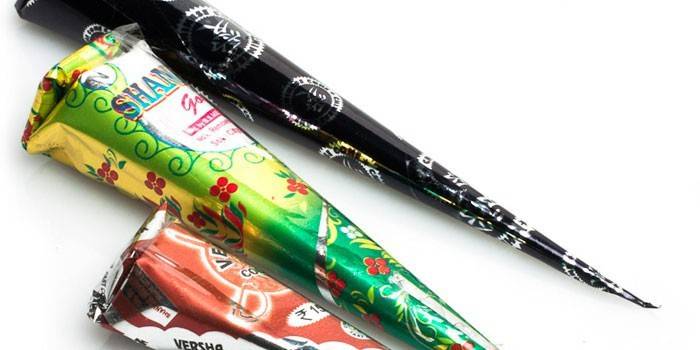

Drawing by hand
If you draw by hand, you usually use a thin stick that is dipped in the composition. You can only draw very small sections of lines with this wand, constantly dipping it in the compound.
If you are good at drawing, you will be able to come up with the motif of the pattern. Apply volumetric patterns, conditionally dividing them into sections. You should start from the center, choosing for yourself a starting point around which you will group the pattern.
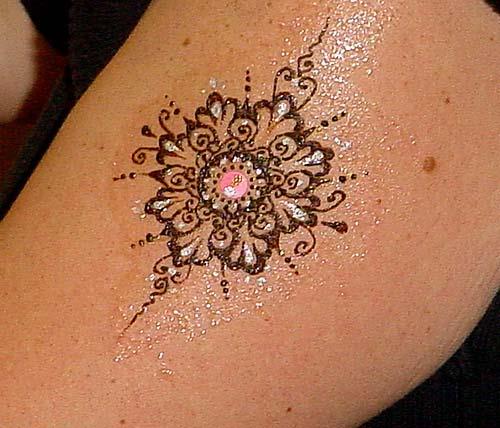

When training, it is recommended to use an ordinary pencil at first, then you can take the tool that you prefer to work with when applying mendi. This can be a brush, a wand, or a syringe of henna paste. When you can effortlessly draw a repetitive pattern on the paper, you can move on to the actual procedure of applying henna to the skin.
When applying the paste, it is recommended to start with the narrowest lines, then work all the straight lines and only then proceed to the circular parts of the pattern.
Before you start applying the floral pattern by hand, draw a line to which the pattern will be "tied". This is done with a tattoo pencil or with an eyebrow pencil.
The transfer technique of application
Often for the application of henna patterns on the skin, professional tattooists use the transfer technique. With its help, images of any degree of complexity are created, but the process of tattooing itself is rather labor-intensive, which can be called the main disadvantage of this technique.
The process .
- Labor-intensive enough.
- Degrease the skin.
- Transfer the contours of the image.
- Apply the outlines to paint the composition of henna and with a water-soluble felt-tip pen to copy on parchment paper.
- Transfer the image from the parchment paper to the skin.
- Remove the parchment.
- Store-bought translators will last for 1-2 days.
